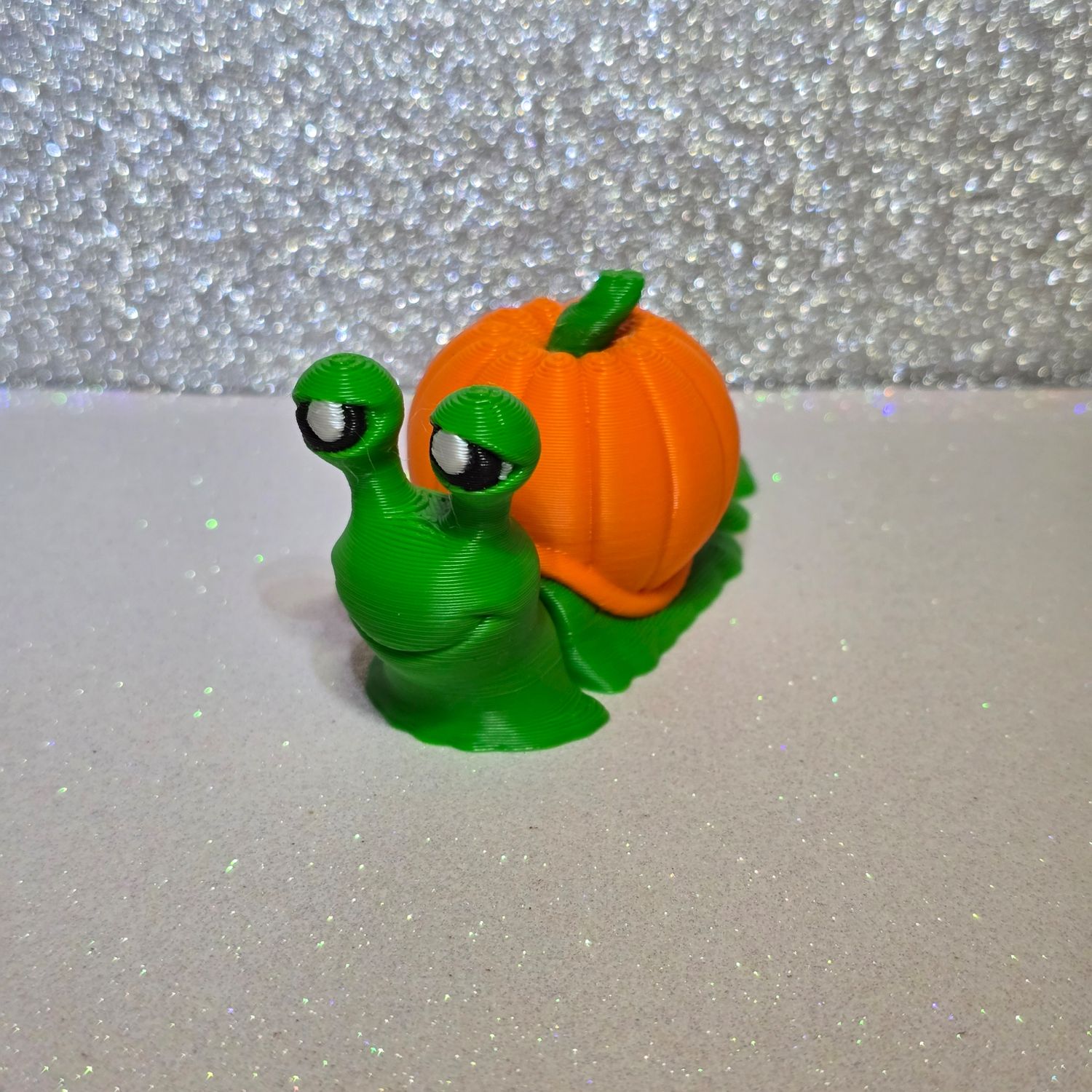Pumpkin Snail-3 inch
Snails are fascinating little creatures! 🐌
Basics
Snails are mollusks, related to clams and octopuses. Most live either on land (like garden snails) or in water (like pond or sea snails). Their defining feature is the coiled shell they carry on their back, which they can retreat into for protection.
Movement
They move using a muscular “foot” that glides along surfaces. To reduce friction, they secrete mucus—that’s what creates their shiny slime trails. Surprisingly, this slime also helps them crawl upside down or across rough terrain.
Anatomy & Senses
They have tentacles on their heads: the upper pair usually has eyes, while the lower pair is used for smelling and feeling.
Snails have a radula—a ribbon-like tongue covered in tiny teeth that scrapes up food.
Their hearts and lungs are small but efficient; land snails breathe air, while aquatic snails often have gills.
Lifestyle
They are mostly herbivores, munching on leaves, vegetables, and fruit.
Snails are hermaphrodites (having both male and female reproductive organs), though they usually still mate with another snail.
Some species can hibernate in cold weather or aestivate (go dormant) in dry heat by sealing themselves inside their shells with a “door” of dried mucus called an epiphragm.
Fun Facts
The largest land snail (Achatina) can grow over a foot long!
Some marine snails, like cone snails, are venomous hunters that use a harpoon-like tooth to catch prey.
Snails play an important role in ecosystems—recycling plant matter and providing food for birds, mammals, and insects.

